Romania on TOP 10
La 28 septembrie în tot mai multe țări se marchează Ziua internațională a dreptului de a ști, pentru a conștientiza cetățenii că au dreptul de a pune întrebări autorităților și, de asemenea, au dreptul de a primi răspunsuri la întrebările adresate.

Decizia de a sărbători și de a promova ziua de 28 septembrie ca Zi internațională a dreptului de a ști a fost luată în ultima zi a Conferinței despre libertatea de informare, care s-a desfășurat la Sofia, în Bulgaria, între 26 și 28 septembrie 2002. La conferință au luat parte reprezentanți ai organizațiilor pentru Libertatea de Informare (FOI) din 15 de țări, dar și reprezentanți ai organizațiilor internaționale active în domeniul informării.
La 28 septembrie 2002, activiștii FOI au înființat rețeaua internațională “International Freedom of Information Advocates Network” (FOIAnet). Membrii FOIAnet au căzut de comun acord să colaboreze pentru promovarea dreptului individual de acces la informații și au adoptat un memorandum care stabilește obiectivele și activitățile rețelei. În prezent, peste 200 de organizații și grupuri civile din întreaga lume sunt membrii FOIAnet și fac schimb de cunoștințe și de experiențe și se angajează în inițiative internaționale pentru a obține un acces mai larg în standardele de informare.
Activiști FOI din întreaga lume organizează o varietate de evenimente pe 28 septembrie pentru a sensibiliza populația cu privire la dreptul de informare. Au loc conferințe, traininguri, concursuri, acordarea de premii, concerte rock și pop, spectacole de teatru, filme, lansări de campanii prin care se solicită informații și noi site-uri web, cu scopul de a promova în continuare acest drept fundamental al omului și de a încuraja cetățenii, jurnaliștii și ONG-urile în căutările lor pentru a obține informații.
AGERPRES/ (Documentare-Daniela Dumitrescu, editor: Mariana Zbora-Ciurel)
In the book “the appliance of Uriel”, two British researchers have pieced “Heavenly computer” from the book of Enoh and solar calendar were obtained from History.
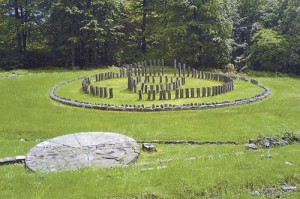
“The appliance of Uriel” Sarmisegetusa was more mobile, with wooden elements
Christopher Knight and Robert Lomas followed exactly the instructions “are being told when cerestri’s book” the antediluvian patriarch Enoh.
“Book of the heavenly are being told when” his teachings on Enoh including Angels we have left some people, elected by them, in order to measure the “routes are being told when and the relations between them, According to their classes, and the season (…) and their laws “.
A “way in but” the …
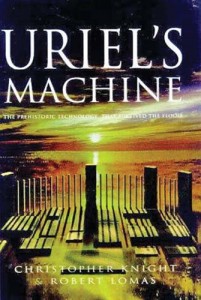
“Uriel’s Machine”, by Christopher Knight and Robert Lomas, sactuarele reconstructs circular astrological and astronomical role
It’s about an astronomical calculation, a calendar (“but the path”), whose elements were “poles, portals and Windows “, arranged in concentric circles, with a “Horseshoe” in 21 the pillars in the Centre-the place of observation. It is studied with the help of the Sun and Moon moves, eclipses of the Sun and the Moon, Lunar node positions, the change in the Solstice and echinoctiu ….. According to “the book of Enoh”, the Angel Uriel Patriarch gave the secret of building this device, whose elements differed from area to area, Depending on the latitude at which the measurements were made. The “device of Uriel” depended on agriculture, so sedentary life and developing societies. Who were these “messengers of God”?
… the date of God’s messengers
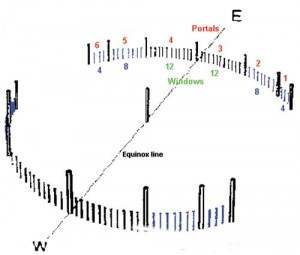
Knight and Lomas followed indications from Enoh’s book and it came out the timing of Sarmisegetusa
The mysterious “book of Enoh” was never included in the religious teachings for people, on the grounds that she could not have understood the human mind. In it are described the facts “Angels”, or “messengers of God”, some very special beings, very high, who have violated many divine commandments, and even have taken soate pamantence, the deed for which have not been forgiven, especially when their children were born Giants. This is also the only remaining reference to them in the books of the Old Testament. “There were Giants in the Earth in those days, After you have impreunat the sons of God with the daughters of men, and they were born they children; they were uriasii that were in the old “. From the “Dictionary of General mythology” of V. Kernbach, We learn that Enoh was a Patriarch who lived before the flood. He was liking the “messengers of God”, they took with them 200 of years, during which time they have learned all the secrets of the Earth and the sky, that put him to write them, to let the inheritance of humanity.
Consultant with pamantencele messengers
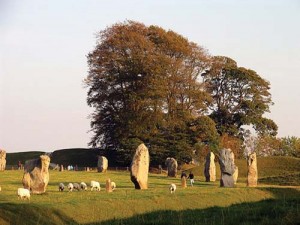
Stone circles at Avebury are older than those at Stonehenge
Enoh left written testimony as messengers of God on Earth were 200 and they had 18 bosses, and he drove everyone’s used to be called Samiza. We quote a few paragraphs from the translation of Kernbach :
‘ (1). When people have multiplied in those days, they started as their daughters to be born beautiful and graceful;
2. And when the angels, children of heaven, they have seen, They told some others: Let us choose between the women and men to have children with each other;
3. Then Samiza, their boss, told them: I am afraid much as you will not reach your goal;
4. And if you do so, I’m afraid that I will support your crime punishment alone;
5. But they vowed that he will give up;
6. And they swore to each other with mutual curses (…)
10. And they chose each cite a woman and came and lived with them and they have learned magic, all incantarile and roots of trees and properties;
11. And these women remained heavy and mosquitoes are born “.
Further, It tells how the messengers of God had taught their sons all the mysteries of heaven and Earth, “and this was in heaven and they have spotted its reputation”, bringing upon themselves and divine mania progeniturilor.
Teaching for people
It can be assumed that Enoch was the son of a “Messenger”, This would explain why it has enjoyed sympathy and especially why it was so long-lived. “The messengers” took him on trips for 200 of years, some space, so far, that “Earth is no no longer see a darkness reigned fully” (“Book of Enoch”, After V. Kernbach ). They took him in a distant land, where Uriel and others have tried to make him understand how to build the “computer” astronomical, researched in detail of the British Knight and Lomas. Then, they put it in writing- 366 of manuscripts, one year-all that aratasera and invatasera, then left him a year among his, to give instruction in reading work, then they took it with them.
The secret place where she was trained as Enoch
Enoch was carried away by the angels into a secret place, where the Angel Uriel i showed a “camera” with which they could measure “are being told when their routes laws”, as well as “what happens in all the years of the world until it is over the new creation”. Restoring your device of Uriel, “book of Enoch”, Knight and Lomas and realized as it corresponds to megalitilor of Stonehenge and concluded that there, in Salisbury Plain, the observer they were re-organizing their angels and there had been led Enoch. As an antediluvian patriarch Enoch, times Stonehenge is older than historians say (3.000 – 1.600 i. C), or not there was! But the two Britons may lose sight of a location element from the story of the Patriarch: “West, they pick up a Mountain large and stately, Sherry “! What is not at Stonehenge! More interesting than the location of the initiation is the “computer” pieced them and included in their book “the appliance of Uriel”. It looks exactly like … the sanctuary of Sarmisegetuza, to be more precise,”solar calendar”, with his orientation observation direction N-S and E-w and the calculation of the year close! Paul Lacey Kunwar, in “the impact of Rome over the Dacians”, He wrote that “the Dacians knew and used a solar calendar that is considered the most accurate of antiquity. Dacic had year 365,242197 days, girl 365,242198 reached by modern astronomy. History of the Dacian calendar allowed a year counting days using poles willing in the shape of a circle, as they walked out of his Knight and Lomas. But, the megalithic complex of Stonehenge have an error “the device of Uriel”: comes with year 366 days! So, the model had to be sought from other latitude! Unlike “year megalithic, dacic was amazing year of precisely, rather, it will look to be inspired by “the appliance of Uriel”.
Astronomical and astrological knowledge of Dacians
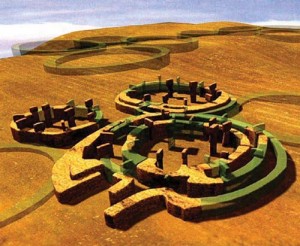
Sanctuary of Gobekli Tepe, Turkey, It is the oldest solar sanctuary, with 7000 years older than Stonehenge
Jordanes, that i knew the Gauls through sec.VI CE, record as: “during the great priest Deceneu, the Dacians knew theory 12 zodiac signs, How do I grow and lowers the orbit of the Moon, the Golden Globe of the Sun surpasses the earthly globe, under what name and under what the signs 346 Star pass from sunrise to sunset, eclipses, rotation of the sky, predetermined rules of heavenly bodies moving … “. I Mean, exactly why do you and Angel had taught Enoch Uriel. Nicolae Popa, a comparative analysis on the author of the History and of Stonehenge, He noted that both avenues are shrines are similar. The centerline of the hearth fire that sectioneaza divides the outer circle into two equal halves from the point of view of the positions of masts.: twice 34 of positions. Horseshoes, at Stonehenge, and History,presents a number of identical positions: 21. The arrangement of groups of positions lespezilor River which sustain the pillars is identical. Nicolae Popa believes that both monuments belong to the same cultural and religious tradition of some Neolithic populations and have served both to measure time, and a ritualistic destination. Construction of Sarmisegetuza would prove in addition, front of the Stonehenge, a high degree of perfection in terms of accuracy of time calculation. The “Heavenly computer” on which the Angel Uriel showed him of Enoch is found in all the sanctuaries of Dacians. Maybe in the mountains of Dacia was held initiating the antediluvian patriarch. In addition, the sanctuaries are attributed by historians of the Getae and masagetilor. By foreign scholars, as local and not award anything, than, can, “cheese”, “the Lamb”, “ied” … Circular sanctuaries abound in Romania, Adamclisi, Sara, The Citadel, Racos- 3sanctuaries, and, the last discovered ( in April 2005), from Holland Park, Black Church Hill.Indeed, good place! This sanctuary is much larger and, It seems, more complex than that of History.
Good place, the parallel 45!
“The apparatus of the Angels” in the territory of Great Britain and Northern Ireland were periods in stone, as they remain standing for posterity. Of the Dacians were more “flexible”, with wooden poles for the variable elements of the “computer” and those of andesite fixed. It can be concluded that the Dacians very well mastered priests technique in the construction of these devices “with circular pillars, portals and Windows “. I helped calculations and “good” that they chose, close to the parallel 45, and at the 45 degrees, any formula for calculating astronomical simplify because the tangent and cotangent of latitude equals 1 and replace, and the sine and cosine are radical 2 on 2 and, as, replace. In other words, not scranteau minds in calculations!That’s why the “path” was so accurate, while others, having the same astronomical model, failed to reach the precision “Dacian year”.
Astrological predictions
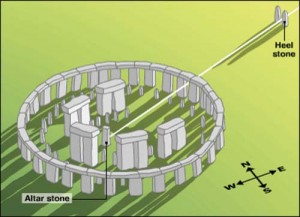
Sanctuary of Stonehenge has the same constituents as the History, only it’s more massive
As astronomers have observed the British tied to complex of Stonehenge, both the large Sanctuary History, and the other found so far, not only have the exact orientation North-South and East-West, but I am so aligned, order of the rising sun’s rays that pass through from an il end to the other in just one day per year, on 22 December, When the Sun is declinatia maxima and start Winter charge. At that time, the entire globe where performance is the Sun and Moon cults, ceremonies were taking place of fire, as the Sun not to “freeze” or go away. On this occasion were made and general forecasts. It has been found at Dacian sanctuaries the positioning of “Monthly nodes”, points that have great meaning for astrologers. Their inclusion in the “appliances” of Uriel was justified by the fact that the “theirs” i have taught their sons how to predict “what happens in all the years”, in zodiac. All astrologers that respects tin cont de “Monthly nodes”, because the South Node shows the baggage with which we are born, While the North node is in the way that a man has to go. From the perspective of geocentrica, The monthly result nodes directly from Sun and Moon moves around the Earth, that influence the size of the spiritual life. The Sun symbolizes the spirit of,masculinity, action. The Moon is an exponent of the soul, femininity, receptivitatii.
Source: suprisingromania
DESTINATION: ROMANIA/Dinosaur Geopark: Dragons, raptors, dinosaurs that once roamed Hateg Land put on display

Photo credit: (c) Sorin BLADA / AGERPRES ARCHIVE
Managed by the University of Bucharest and defined as a natural park sitting in the Hateg Depression, the Dinosaur Geopark is a protected area with a special status, the key element that gives its specific being the 70-million-year-old dinosaur fossil sites dating from the Upper Cretaceous. The dwarf dinosaurs that lived in the Hateg Depression are unique in the world, and their importance and attractiveness is enhanced by the discoveries of nests with dinosaur eggs and embryos, of mammals contemporary of the dinosaurs and of the remains of a flying reptile — the Hatzegopteryx, considered to be one of the largest representatives of the Pterosaur (flying reptiles) group. The Geopark was declared a protected area of national interest in 2004, and one year later it was accepted into the European Geoparks Network and the Global Geoparks Network under the UNESCO auspices.
Leaving aside this technical data, the Dinosaur Geopark is one of the newest and most offbeat tourist destinations of Hunedoara County. The attractions are consistently distributed in the Geopark territory along four thematic trails, allowing for one-day hikes during which the visitors can learn a lot of interesting things from the authorized guides.
“The Geopark provides the setting for the development of a less conventional tourist destination, with focus on the promotion of geo—and bio-diversity. For this reason, our efforts concentrate on designing thematic tourist routes, visiting and interpretation spots subsumed under the slogan ‘Walk through the ages’. Our purpose is to give visitors the opportunity to discover Hateg Land, beginning with the time when the landforms took shape, advancing through the age of dinosaurs, of the Romans, the knights, getting to know the traditions and culture specific for this area until this day. Therefore, we chose the variant of fitting out several visiting points and not a classic museum collecting everything under one roof, exactly in order to give visitors the opportunity to spend as much time as possible in Hateg Land,” says Dr. Alexandru Andrasanu, director of the Hateg Land Dinosaur Geopark.
There is no way you could get bored in the Dinosaur Geopark. Undoubtedly, for the tourist coming here on holiday, and especially for children, the dramatic element of the trip is represented by the Magyarosaurus dacus, the life-size model of a dinosaur that lived 70 million years ago in Hateg Land. With a height of three meters and seven meters long, the Magyarosaurus was built by Canadian paleoartist Brian Cooley, a sculptor who acquired world fame for his minutely fleshing out the skeletons uncovered by paleontologists, under strict observance of all the scientific details provided by researchers. But this is just one of the Geopark temptations.
“At this moment, we have several exhibitions on various themes opened in the Geopark. At the Geopark headquarters in Hateg the visitors can admire the exhibition ‘Dragons, Raptors, Dinosaurs’. At the Center for Science and Arts of the Bucharest University in the General Berthelot commune, the tourists are greeted by the Magyarosaurus dacus, and inside they can see two exceptional exhibitions: ‘Calligraphy of Time’ and ‘Soul Prints’, developed together with students of the Bucharest University of Arts,” explains Adina Popa, communication expert with the Hateg Land Dinosaur Geopark.
The series of pleasant surprises continues in Sanpetru — Sintamaria Orlea commune, where children and adults alike are welcome to the House of Dwarf Dinosaurs. Here they can find out, among others, how a paleontological site is organized, and as a reward for having been patient, children but also the adults who are still children at heart, can model their own dinosaurs of clay.

Photo credit: (c) Sorin LUPSA / AGERPRES ARCHIVE
“Of recent, another two visiting points were added to our map — the Volcanoes House in Densus and the Pestera Traditional Technology Complex in Salasu de Sus. Both were fitted out this summer with Geopark volunteers. All visiting spots are situated on the four thematic trails suggestively titled: ‘The Dinosaurs Valley’, ‘The Volcanoes Trail’, ‘History and Legends’, and ‘Nature and Tradition’,” details Adina Popa.
On a sunny day with pleasant temperatures, any of the four trails conceived within the boundaries of the Dinosaur Geopark can be covered without difficulty. People with an average physical condition who want to do some exercise can hop on the bike and wheel off the entire distance. Each route is approximately 40 kilometers long and can be easily covered in one day. There is also the option of a motorized tour that turns the trip into an easy-breezy experience.
Let’s start with the “Volcanoes Trail”, having administrator of the Dinosaur Geopark assets Dr. Cristian Ciobanu as guide.
“The trail runs between the villages of Densus and Stei, near the famous St. Nicholas Church of the Densus commune. ‘The Volcanoes Trail’ revives two worlds that disappeared long ago: the volcanoes and the remnants of their eruptions — ash, ‘pillow’-type lava, solidified lava and many others — and the Tethys Sea, of which rocks are preserved with traces of the creatures that lived in the water more than 2,000 m deep,” explains Cristian Ciobanu. The ‘Volcanoes Trail’ follows the main road from the village center on a 3 km long portion to the geological site. From there, a section follows the road in the Stei village to the church, and another section heads northwards on a dirt forest road, up above the volcanic rocks that hold an observation point for birds of prey. Arrived here the hiker can follow a different route: Densus — Rachitova, that will take him in about an hour and a half to the Medieval Tower of Rachitova. “Near the geological site the route passes by the Volcanoes House, an experimental museum in a cob construction, that is a natural building material made mainly from sand, clay and straw. Here the visitors can learn more about the Earth, volcanism, crystals and especially about how this corner of the world looked like in the time of the dinosaurs,” elaborates the Dinosaur Geopark specialist.
Equally spectacular and interesting is the ‘Dinosaurs Valley’ route that crosses the localities of Hateg, Sintamaria Orlea, Sinpetru, Sibisel and Ohaba Sibisel. On a distance of 32 kilometers one sees the medieval church in Santamaria Orlea, the St. George Church (14th century), the House of Dwarf Dinosaurs, the fossil sites on Sibiselului Valley, the granite boulder field and the traditional village Ohaba Sibisel.

Photo credit: (c) Sorin BLADA / AGERPRES ARCHIVE
Dubbed ‘History and Legends’, the third trail that invites one to explore the Dinosaur Geopark takes one past the medieval church in the Pesteana village, the Hateg Village Museum, the former capital of Roman Dacia — Ulpia Traiana Sarmizegetusa, and then, after crossing the Clopotiva village, it reaches Cetatea de Colt / The Rocky Ridge Citadel, which is said to have inspired Jules Verne for writing his “The Castle of the Carpathians.”
And if you found these three routes thrilling, than you must also follow the one called ‘Nature and Tradition’. Setting off from Hateg one passes by the medieval church of Sintamaria Orlea and then stops at the lookout point Varful Poieni. After a few minutes of rest, one continues towards the Knyaz’s Court and the Serfs’ Church in Salasu de Sus, then one gets to the Daffodil Glade, the Malaiesti Fortress and catches his breath at the visitor center of the Retezat National Park in the town of Nucsoara. On the way back to Hateg one can stop at the church of Nucsoara that was mentioned in documents as early as in the 13th century, and at the traditional complex “The road of water and the stone” in Pestera.

Photo credit: (c) Sorin BLADA / AGERPRES ARCHIVE
All departures along the themed trails begin at the Geopark Visitor Centre in Hateg town, where the exhibition “Dragons, Raptors, Dinosaurs” can be seen. It’s a special exhibition, because one has the opportunity to see the unique dwarf dinosaur that once roamed this area, in a natural size reproduction. Even if its name is “Balaurul bondoc / The Stocky dragon” and its length is of just 1.8 meters, this dinosaur was a genuinely ferocious creature.
Displayed opposite the aisle is the “Zalmoxes robustus”, a herbivorous dinosaur some 3 m long that weighed about 300 — 350 kilograms and preferred living in a humid environment near watercourses. Its name signifies “the robust lizard of Zalmoxes”. Zalmoxes robustus fossils were among the first dinosaur fossils discovered in the Hateg Basin by Baron Franz Nopcsa, who also described and illustrated them in his 1902 monograph.
Alexandru Costin, a young volunteer at the Hateg Land Dinosaur Geopark, believes that the exhibition “Dragons, Raptors, Dinosaurs” is a genuine journey in time. “It takes us to times long past, where scientifically proven truth entwines with the mystery of the still unknown, local legends and myths. Together they create a magical atmosphere.”
So, the Hateg Land Dinosaur Geopark can be a perfect destination for a mini-holiday at the foot of Retezat. Add to the tourism landmarks the welcomeness of the hosts, the charming nature and the traditional food served at the certified boarding houses in the area and you’ll get the successful recipe of a day to tell your friends about. AGERPRES
THE GIST:
– Dwarf dinosaurs existed on a Late Cretaceous island, a new analysis of bones confirms.
– Dwarf dinosaurs appear to have emerged from a process called progenesis, which shortens the developmental period.
– The dwarf dinosaurs lived fast, reaching sexual maturity at earlier ages than their mainland counterparts, and they likely died young.
A new study not only confirms the existence of dwarf dinosaurs, but also explains how dinosaurs shrank during the Late Cretaceous at a Neverland-like place — Hateg Island, Romania — where dinos never really grew up.
According to the study, which has been accepted for publication in the journal Palaeogeography, Palaeoclimatology, Palaeoecology, the unusual phenomenon appears to have only affected some of the island’s dinosaur residents.
Benton, who directs the Palaeobiology and Biodiversity Research Group at the University of Bristol, and his colleagues conducted one of the most extensive studies yet on the Hateg Island dinosaur remains. They analyzed the dinosaurs’ limb proportions and bone growth patterns, comparing them with those of mainland dinos.
The analysis determined that at least four of the Hateg dinosaurs were dwarves.
The diminutive dinosaurs included the titanosaurian sauropodMagyarosaurus, which had a body length of about 16 to 19 feet. That’s impressive by human standards, but is miniature compared to a sauropod such as Argentinosaurus, which grew to be at least 82 feet long.
Another small dinosaur was the hadrosaurid Telmatosaurus. Its 13-foot-long body contrasted with the average size of other hadrosaurids, which were 23 to 33 feet long, according to Benton.
Two species of Zalmoxes dinosaurs also appear to have been dwarves, with one — Zalmoxes robustus — measuring about 10 feet in length.
“So these forms are all typically half the length of their close relatives on larger land masses, and this equates to a body mass of perhaps one-eighth that of the relatives,” said Benton. “Body mass is what matters most in biological terms, such as physiology and food intake.”
Magnified sections of the dinosaurs’ bones revealed that the animals were adults and not juveniles. The scientists believe the dinosaurs likely shrank due to a process called progenesis, which shortens the developmental period. Sexual maturity happened early, and these dinosaurs may have also died two to five years younger than their “normal”-sized counterparts.
“This in-depth study by Benton and colleagues is both fascinating and provocative,” paleontologist Scott Sampson, a research curator at the Utah Museum of Natural History, told Discovery News, “demonstrating that the largest group of animals ever to walk the earth included dwarfed varieties.”
Sampson added that the study also supports “the more general ‘island rule’– the idea that, when marooned on islands, evolution tends to make large animals smaller, and small animals larger.”
Scientists continue to debate why this happens on islands. Reduced supplies of food, smaller ranges, and few larger predators have all been theorized.
“I think most biologists accept that there is something going on, and that the island rule has validity,” Benton said.
sources: new discovery
Larisa Iordache kept once more her all-round champion crown of Romania’s women artistic gymnastics on Saturday.

She totalled 61.100 points in the competition hosted by the ‘Ioan Kunst-Ghermanescu’ Sports Hall of Bucharest, for her third consecutive national title; Anamaria Ocolisan ended second with 57.700 and Diana Bulimar third with 57.250.
The men’s and women’s events of Romania’s National Artistic Gymnastics Championships are scheduled on Sunday. AGERPRES
Peste 300 de voluntari americani și români au curățat de gunoaie plaja din stațiunea Mamaia, sâmbătă, într-o acțiune organizată de Ambasada SUA la București și Liga Navală a Statelor Unite – Consiliul din România, cu prilejul Zilei Internaționale de Curățare a Plajelor.

Alături de adjunctul șefului misiunii diplomatice a SUA la București, Dean Thompson, și de angajați ai Ambasadei SUA la București, la curățarea de gunoaie a plajei și a zonelor limitrofe au participat militari ai forțelor armate americane și române, reprezentanți ai autorităților constănțene, sportivi consacrați — printre care fostul președinte al Federației Române de Atletism Ilie Floroiu și vicecampioana mondială la handbal feminin Elena Frâncu, elevi de la Colegiul Național “Mircea cel Bătrân” și Clubul Sportiv “Farul” Constanța, reprezentanți ai Forțelor Navale ale României și ai Jandarmeriei.
“Vă mulțumesc tuturor că ați venit astăzi, aceasta este o inițiativă foarte importantă. (…) A avea grijă de oceanele noastre, a avea grijă de mediile noastre marine este ceva pentru care suntem cu toți răspunzători, pentru că aici trăim și ne afectează pe toți. Astăzi, vom fi un exemplu bun, precum am fost și în anii trecuți. Anul trecut, jumătate de milion de voluntari au adunat peste 16 milioane pounds de gunoi, aproape 8 milioane de kilograme. E important ceea ce facem, o să păstrăm fauna marină în siguranță și o să păstrăm căile navigabile maritime deschise pentru comerț, pentru shipping și recreere”, a spus, sâmbătă, adjunctul șefului misiunii diplomatice a SUA la București, Dean Thompson.
La finalul acțiunii de curățare a plajei, care a durat aproape trei ore, au fost strânși aproximativ 700 de saci menajeri cu gunoi.
Ziua Internațională de Curățare a Plajelor, celebrată în fiecare an pe 19 septembrie, este un avertisment cu privire la gunoaiele aruncate în mări și oceane. Acestea afectează sănătatea oamenilor, a florei și faunei, precum și resursele care depind de sănătatea apelor.
Evenimentul este organizat în contextul apropiatei conferințe anuale dedicate oceanelor care va avea loc pe 5 și 6 octombrie în Santiago, Chile.
Departamentul de Stat și Ambasadele SUA din întreaga lume se implică în acțiuni de curățare a plajelor, în efortul constant de a îmbunătăți administrarea mediului marin pe trei direcții: poluarea marină, acidifierea oceanelor și pescuitul sustenabil.
AGERPRES/(A, AS — autor: Nona Jalbă; editor: Vicențiu Purcărea)